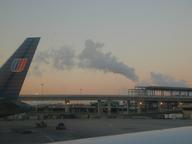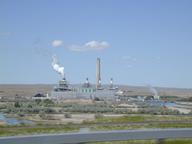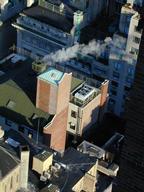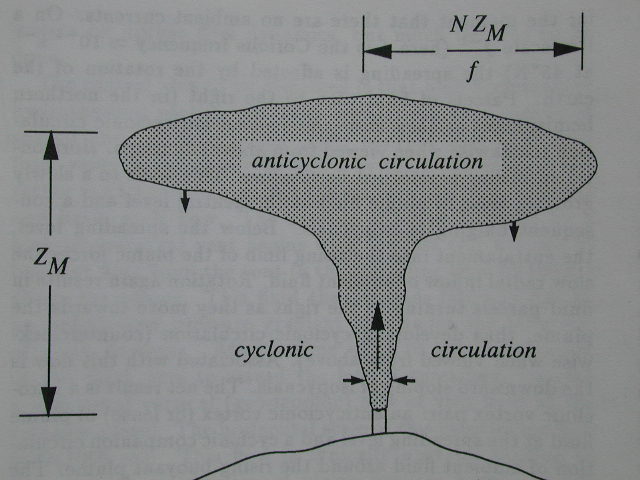Motivation for studying plumes in rotating tanks
![]()
We're all familiar with atmospheric plumes bending over in a cross flow.



Photographic and acoustic imaging show that deep-sea vent plumes bend over similarly.

At moderate velocities (3-6 cm/s in the deep sea over ridges), a 3-D numerical model (Lavelle, 1997) suggests that rotation and ambient vertical shear may induce some more complex dynamics in the rising plume, like bifurcations, but the plume is basically similar to atmospheric plumes in a cross flow.
N above Ekman BL (>~25m) = 9x10^-4
U=6cm/s

A widely held alternative view of how plumes rise into the deep sea is illustrated below with a sketch from Helfrich and Speer (1995). They predict that the entrainment by a rising plume will form a cyclonic vortex, while just above, at the plume's level of neutral buoyancy, the hydrothermal effluent cloud will form an anticyclonic vortex.

Bush and Woods (1999) experimented with line sources, which may turn out to be analagous to a point source in a cross flow...
![]()